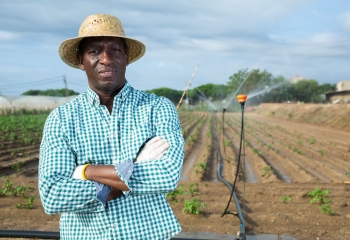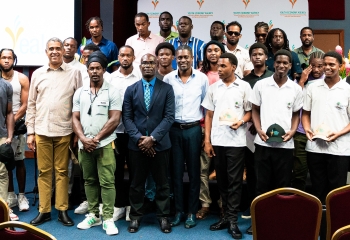Clarendon farmers building climate resilience and winning the fight against Ginger Rot Disease
Ginger is to Peckham in Clarendon as cabbage is to Douglas Castle (another community on the border of Clarendon and St. Ann).
If you go to Peckham the farmers there are quick to tell you that the area is known for its ginger production and was a leading community in Jamaica from the 1960’s until the 1980’s when the Rhizome (ginger) rot disease struck.
Since then it has been an on-going battle for the farmers, who are now seeing some light at the end of the tunnel.
“We have been doing a series of interventions including using previously untried lands and treating it with Topsin in one instance and hot water in the next. We have also been working with the farmers to educate them about the disease and what to do to reduce the spread of the disease," explained Agricultural Specialist, Ruth Simpson.
Simpson works with the Building Resilience and Adaptation to Climate Change while Reducing Disaster Risk in Peckham, Clarendon and Surrounding Communities Project that is being implemented by the Environmental Health Foundation (EHF). The project is funded by the Caribbean Development Bank (CDB) through the Community Disaster Risk Reduction Fund (CDRRF), a multi-donor trust fund. CDRRF is supported by contributions from CDB, Global Affairs Canada, and the European Union.
The EHF project, which was launched in February 2018, has been working with over 300 farmers in nine communities to increase the resilience of Peckham and adjoining communities in Clarendon to climate change (CC) impacts.
According to the farmers, their ginger yields have been increasing.
“We have reaped 400 pounds of ginger so far,” said Herbert Freckleton, President of the Top Alston Farmers Group – one of the adjoining communities of Peckham. He explained that several farmers were also being assisted by the Rural Agricultural Development Agency (RADA), the Social Development Commission and the Bodles Agricultural Research Facility.
“We have been working with the farmers to diversify their crops in light of the climate impacts facing the communities,” said Faradaine Forbes-Edwards, Project Manager. “They have challenges with access to water and farming is not lucrative with some of the crops that they have been planting and how they have been planting them.”
She explained that one of the activities done by the EHF project was soil assessments in the communities. This helped to determine the ph of the soil and generally the results showed that the ph levels were low, an issue which could cause plants to mature more slowly. The technical team was able to work with the farmers to correct the issue and the farmers were thankful for the assistance.
“We have learnt a lot of new ideas such as how to protect our environment and hillside with training on how to reduce soil erosion and also better use of fertiliser,” said Worrell Williams, who plants yams, pumpkins, banana, sweet potato and also rears livestock.
The project, which is slated to end in December 2019, will also see the farmers being trained in climate smart agriculture, financial management and marketing strategies as well as good governance.
“This project has given hope to small farmers. This project has led me to the business side of farming. I am now thinking of expanding,” said one farmer.


